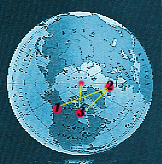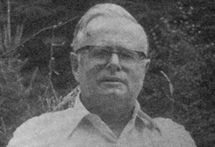
Charles Hapgood (1904-1982)
After graduating from Harvard, Charles Hapgood taught history at Keene State College in New Hampshire. In 1949 one of his students asked about Atlantis, and he transformed the query into a research project, questioning the gradualist rules of geology and seeking evidence of a catastrophe large enough to destroy the fabled land. For 10 years, aided by his eager students, Hapgood worked on his theory of earth crust displacement – an update of Hugh Auchincloss Brown’s theory that the entire planet has previously capsized. Brown’s theory simply stated that as the Antarctic polar ice cap gains weight [9], the planet becomes less stable, eventually becomes unbalanced and topples over. The relative weights are more akin to a speck of dust on an automobile tyre than anything more serious – the Antarctic icecap weighs less than one millionth of the entire planet. Hapgood doubted that an accumulation of ice at the poles was enough to tip the entire planet over. He believed that only the crust shifted.
Crustal displacement, from Hapgood’s point of view, is a very violent and sudden shifting of only the “skin” of the planet Earth (the crust’s thickness is only 0.005% of the equatorial diameter). This shift causes various disasters, with each disaster triggering another, and so on. Hapgood suggested that each Ice Age would not affect the whole earth at the same time, but only two regions of it – those that shifted into polar regions.
If it were only the skin that shifted, as Hapgood proposed, then the ice cap mechanism becomes more likely. However I do wonder whether this process could be infinitely repeatable,for if the poles ever ended up in oceanic areas, then sufficient ice would never be able to accumulate.
In 1958 an in depth explanation was published in his book titled Earth’s Shifting Crust, with its endorsement by Albert Einstein. Perhaps his ideas were just too radical for, despite the endorsement, and although he managed to avoid the ridicule previously allocated to Velikovsky, academics and the public alike ignored his book.
Undaunted by this lack of acclaim, he continued to work on his theory, with a major update being published in 1970, re-named The Path of the Pole. Helped by recent advances in geology, Hapgood replaced the ice cap mechanism with a trigger coming from within the Earth itself. Although he was unsure precisely what that trigger was, it was most likely something involving gravitational imbalances and centrifugal forces. In the introduction he wrote:
“Polar wandering is based on the idea that the outer shell of the earth shifts about from time to time, moving some continents toward and others away from the poles, changing their climates. Continental drift is based on the idea that the continents move individually… A few writers have suggested that perhaps continental drift causes polar wandering. This book advances the notion that polar wandering is primary and causes the displacement of continents…. This book will present evidence that the last shift of the earth’s crust (the lithosphere) took place in recent time, at the close of the last ice age, and that it was the cause of the improvement in climate.”[10]
Hapgood suggested three previous locations of the poles. The most recent North Pole is Hudson Bay, which was the epicentre of the North American ice sheet during the last Ice Age. The previous sites were in the Greenland Sea, and the Yukon district of Canada, although his evidence for these is totally dependent on radio-carbon dating.[11] Each shift was approximately 30°. These diagrams show where the previous North Poles were located, with their corresponding equators:
|
|
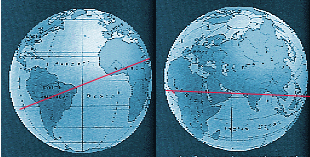
1. Yukon |
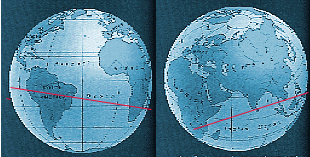
2. |
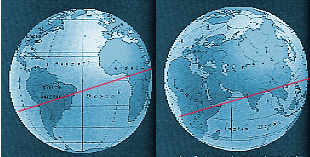
3. Hudson Bay |
|
Interestingly, the Amazon jungle has remained at the equator during each of these shifts, which may account for its enormity.
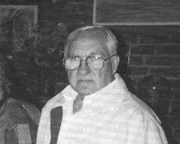 |
James Bowles |
James Bowles is a retired civil engineer who worked for NASA sub-contractors on the Apollo moon program. In his book The Gods, Gemini, and the Great Pyramid, gives us a straightforward, easy to grasp theory on how the crust can shift.
On the day of the pig roast everything was ready. The spit mechanism was in place, the pit had been dug, there were all kinds of charcoal, and all the guests were milling about. All we needed to start the festivities was the pig and a match. So my dear wife, along with Bonny, led us into the bathroom where the pig was laying covered with ice in the bathtub. But one look at the pig and I knew we were in trouble! . I’d figured on a fifty pound pig, because that’s what we’d talked about, but this had to be 100 pounds if it was an ounce..
Well now that one and a half inch of galvanized water pipe looked like a tooth pick next to the pig, but it was too late to do anything about it at this point, besides somebody had lit the charcoal.. Half way through the night, the pipe broke, and the pig fell into the fire.. Well to make a long story short, a friend of mine and I went into town and got a bigger pipe from behind the garage and put everything
back together again.[11a]
| The Spit Mechanism | 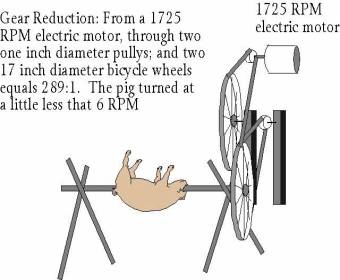 |
The point is that the pipe didn’t just break, it broke from fatigue.
This is torque, forces created by rotation. Bowles calls it Rotational-Bending, or the RB-Effect. If enough tension is happening within our planet, and it is constant, then one day something must give, slip or break. Everything that suffers stress will eventually crack. In our planet’s case it would be the semi-plastic attachment of the crust to the asthenosphere. The stress would also create heat, and this could be a simple explanation for volcanoes – an outlet valve for all the heat created by the stresses within the earth. Bowles points out that an easy way to break a piece of wire is to bend it backwards and forwards, over and over, until it snaps. The ends of the broken wire will be quite hot – heat being a by-product of stress.
Bowles uses the analogy of cargo on a ship to further clarify his idea: When cargo is tied securely, it will ride with the ship and not come to any harm. But if the ropes are loose, and the cargo slips and slides, then damage can occur.
The earth’s crust is not securely tied; rather it is connected to the core via a series of semi-plastic layers, some of which are seas of molten rock and liquid iron. The waves in the cargo analogy correspond to the gravitational pulls of the moon, sun and (to a much lesser extent) the other planets. Our situation is that we have a crust that is 99.9% securely tied to the planet’s core. The sun and moon are constantly tugging away, testing the attachment. Eventually something has to give.
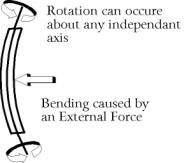 |
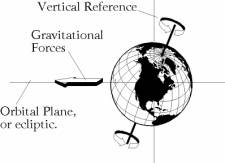 |
The centrifugal forces try to shift matter towards the equator. This is where the stress is. We talk about a pole shift, but technically it’s the entire crust that shifts, around two fulcrum points, due to stresses towards the equator. I came across a science Q&A website run by NASA, and found questions regarding the number of earthquakes in Antarctica. Here are the expert’s answers:
Antarctica is unusual in that there are very few earthquakes there. Of all the seven or nine continents, or of all the 7 or 25 plates (depending on how you count), it has the fewest earthquakes, and it has none of the big, damaging kind.There are very few earthquakes in Antarctica. It is one of the questions we are trying to answer out there. There are numbers of plate boundaries and we have always been astonished that we haven’t seen more earthquakes. We have wanted to see them, we have tried to record them, but Antarctica is a real puzzle because there
are very few earthquakes. There should be many more considering the type of plate boundaries there are, and the type of continental structures there are, but there aren’t that many. We are trying to work it out. But now it is still a puzzle.
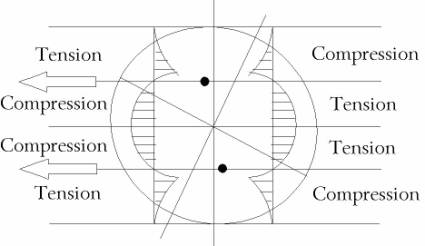 |
| The polar regions of this globe are unaffected by the forces at work, hence very few earthquakes. |
It is a puzzle if the standard continental drift model remains in use. The R-B Effect theory of Bowles declares that the closer to the equator you get, the more earthquakes there are, due to the forces of tension and compression.
When I went to high school, I was shown a trick that fascinated me. Firstly, you wedge a ballpoint pen into your desk somehow. Then you get the spring from inside a broken pen, and you stretch it out. Using this wire like a two person wood saw, you cut through the bottom of the pen’s clip, and saw right through to the top of the pen. It has to be done fast. This action cuts the plastic, but friction creates heat and causes the plastic to melt together again, just behind the cutting action. The result is a pen with a surgical scar where the clip joins. I figure this is what happens to the earth when the crust slips – it breaks away, and then cements itself in place again.
In recent times orthodox scientists are re-assessing our planet’s internal mechanics, and have finally started to accept pole shifts as a possibility:
July 1996: Scientists at Columbia University in New York confirmed that the earth’s inner core was spinning faster than the planet itself, by approximately 1/3 of a second per day, allowing it to lap the Earth’s surface approximately once every 400 years. This may help explain Earth’s magnetic fields, and why they periodically reverse.
1997: Researchers at the California Institute of Technology reported that an evolutionary big bang, with relative evolutionary rates of more than 20 times normal, coincided with another apparently unique event in earth history; a 90-degree change in the direction of Earth’s spin axis relative to the continents.
The poleshift began about 530 million years ago, taking roughly 15 million years to complete. [Throughout this book I ask that you ignore these large time periods, and allow that current dating techniques might, for some reason, be fallible.]
As slow as this sounds, normal continental drift cannot account for movement at such a speed. Dr. Joseph Kirschvink, a geologist and lead author of the study, speculates that it was due to:
“true polar wander” which is caused by “an imbalance in the mass distribution of the planet itself, which the laws of physics force to equalise in comparatively rapid time scales. During this redistribution, the entire solid part of the planet moves together, avoiding the internal shearing effects which impose the speed limit on conventional plate motions.” [12]
The study speculates that changing weather patterns broke up ecosystems into smaller, isolated communities, thus promoting rapid evolution.
The study also implies that poleshifts and evolution have occurred in unison, although a different reason for this will be explained in Chapter XX
January 2000: Professor Sagar of Texas A&M University and Anthony Koppers of the Scripps Institute of Oceanography have, while studying underwater volcanoes, found evidence of poles shifting, albeit 84 million years ago. The shift consisted of “rapid latitude changes in various locales”, with rapid meaning a relatively rapid period of two million years.
“We calculate that the sites of Washington D.C. and Dakar, Senegal would have shifted south by 15 to 20 degrees”.
The article is highly technical but it appears they locate a previous pole at 58.9°N,
337.4°E[13]
How long will it be before a poleshift of 10,000 years ago is validated by scientists?
[9] Note: there have been numerous studies undertaken and as many show that the Antarctic ice cap is growing as those that show it to be melting.
[10] Charles Hapgood, Path of the Pole, Author’s Note, page xvi
[11] Hapgood stated that as hard as it was to find evidence for the Hudson Bay location, the difficulties in locating the previous poles were much greater. Earth’s Shifting Crust, page 275
[11a] James Bowles, The Gods, Gemini, and the Great Pyramid, Gemini Books, 1998, pages 33-34


